We’ve all heard of the Little Deuce Coupe (car and song) and know emphatically, that we’re talking about a 1932 Ford coupe. It was a big deal because it was a break from the old-school Model A and it was available with a brand-new flathead V8 engine. But…can that moniker be bestowed on a 1932 Plymouth convertible coupe? Yeah, sure but it will never be quite the same thing. And that’s one of the reasons that this Dahlonega, Georgia discovery, courtesy of Zappenduster, is important – it’s not a 1932 Ford, it’s a brand and model that don’t surface any too often. Potential here? Well, let’s see, this aluminum shed find is available, here on craigslist for $5,000.
Plymouth was still a fairly new player on the domestic auto scene in ’32, having initially come together in ’28. As a lower-priced model, it was exactly what was needed during that depression-ravaged time. Surprisingly, Plymouth placed third in the ’32 domestic automobile production race with a total output of 186K copies, dropping them behind number two Ford and first-place finisher Chevrolet. Body styles were varied with the usual array of coupes, convertibles, and sedans. Our subject car, a model PB and specifically referred to as a “convertible coupe” is one of 6,400 produced that year.
The listing gives next to no details other than telling us that this Plymouth is all steel except for one rear fender. It’s hard to say what shape the body is in as the images aren’t telling but it appears to be sound. The bumpers are missing and it doesn’t look as if there is a fabric top still in place though the frame is visible. It’s the same thing with the interior, it’s in disarray with the seat yanked out and a lot of detritus blocking a clear view of what’s present and useable. It’s the same story in the rumble seat compartment too – it currently looks like a just place to throw stuff.
I gather this rag-top is a non-runner. It’s powered (when it did operate) by a 65 HP, 196 CI, in-line, four-cylinder engine that is connected to a three-speed manual transmission. One interesting observation is the attached alternator – it looks like a newer piece so maybe this PB has been converted to a twelve-volt electrical system.
It’s a shame the listing is so lacking in detail or telling images. This is a car that you won’t often find and I’d say that it probably has a lot of potential but not likely as a stock restore. It’s certainly a different twist on the iconic “Little Duece Coupe, wouldn’t you agree?
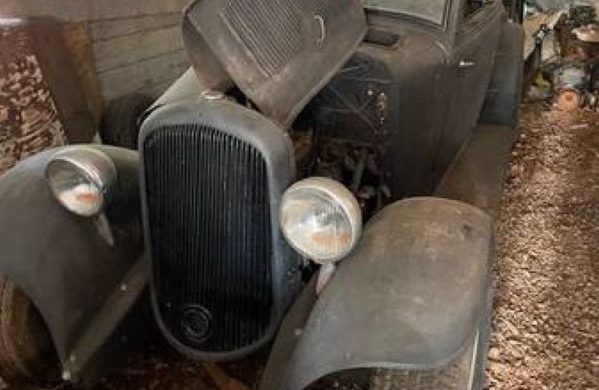
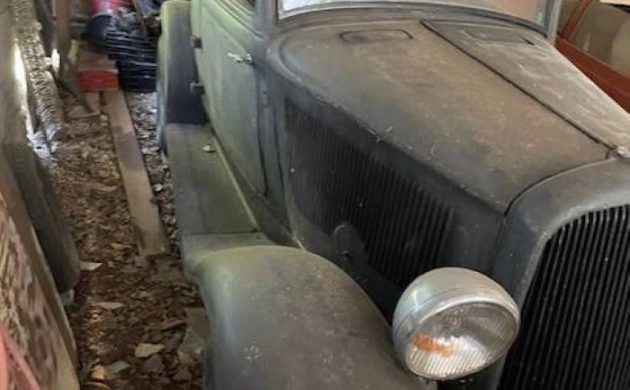
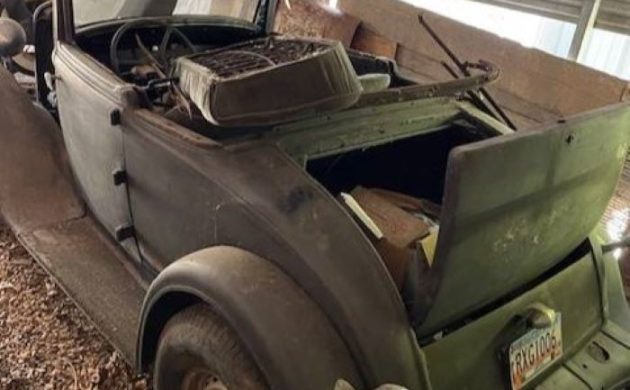
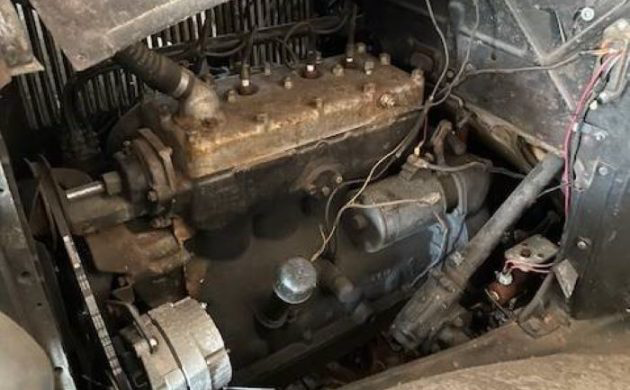
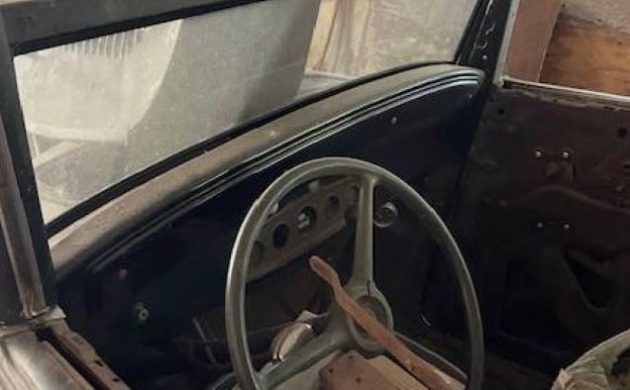


That could make a real nice street rod. Looks to be sound and certainly has the looks.
We’ll never know the story on this one
folks, the seller deleted the listing. He’s either sold it or changed his mind about selling it. Looked to be a
great start for some lucky buyer. Now all we have is this post.
No, no, no, Jim, can’t be messin’ with the classics, and a ’32 Plymouth just won’t do as a “deuce coupe”. May as well show the Mona Lisa with her tongue sticking out. Plymouth/Dodge did well in the Depression, as an alternative cheapie, and Plymouth coupes, like all coupes then, did well at the drag races, but not well enough to write a song about. I know I paint a dismal scene with the classic car hobby, maybe enough interest to restore this, but I doubt it.
And its gone it was a decent price so I bet it sold congrats to whoever grabbed it
That was a very good price.
Similar in looks to the ’32 Ford but much larger.
Mine is full fendered with hood and the engine compartment fits the 5.7 Hemi and matching auto transmission. Much more leg room as well.
The Plymouth came stock with a chopped top, unlike Ford that had to be chopped.
Sold here in Australia as a DM Dodge. They arrived minus body and that was fitted by TJ Richards in Adelaide which later became Chrysler Australia. The Oz bodies were wood framed. Interesting is that Oz bodies had only one air vent below the front window and the US cars (Canada in reality) have two. Alternator is certainly not original but the starter is (6V). On the engine photo is missing a half-flow oil filter. Options were automatic vacuum clutch and freewheel. Another first is supposed to be rubber bushes in the front eye of the rear leaf springs. Also, this was the year of “Floating Power”, that is, rubber engine mounts – two to be exact. One under the water pupm and one at the back of the gearbox. If a line is drawn front mount to mount it represents the centreline of the mass. The engine torque is counteracted by a small three leaf spring (3 or 4?). That spring is just forward of the bottom of the steering box. At idle the engine rocks from side to side and your everyday mechanic says you need new engine mounts but they can’t understand how an engine can only have two engine mounts (I think you US guys call them motor mounts). 32 was the start of cars getting modern and by 36 they are much the same as cars of today except for disc brakes coming along in the late 50s. In addition, the DM had DB stamped on the top of all the bolts in the car so when they went down the production line they must have had a bucket of Dodge bolts and bucket of Plymouth bolts.